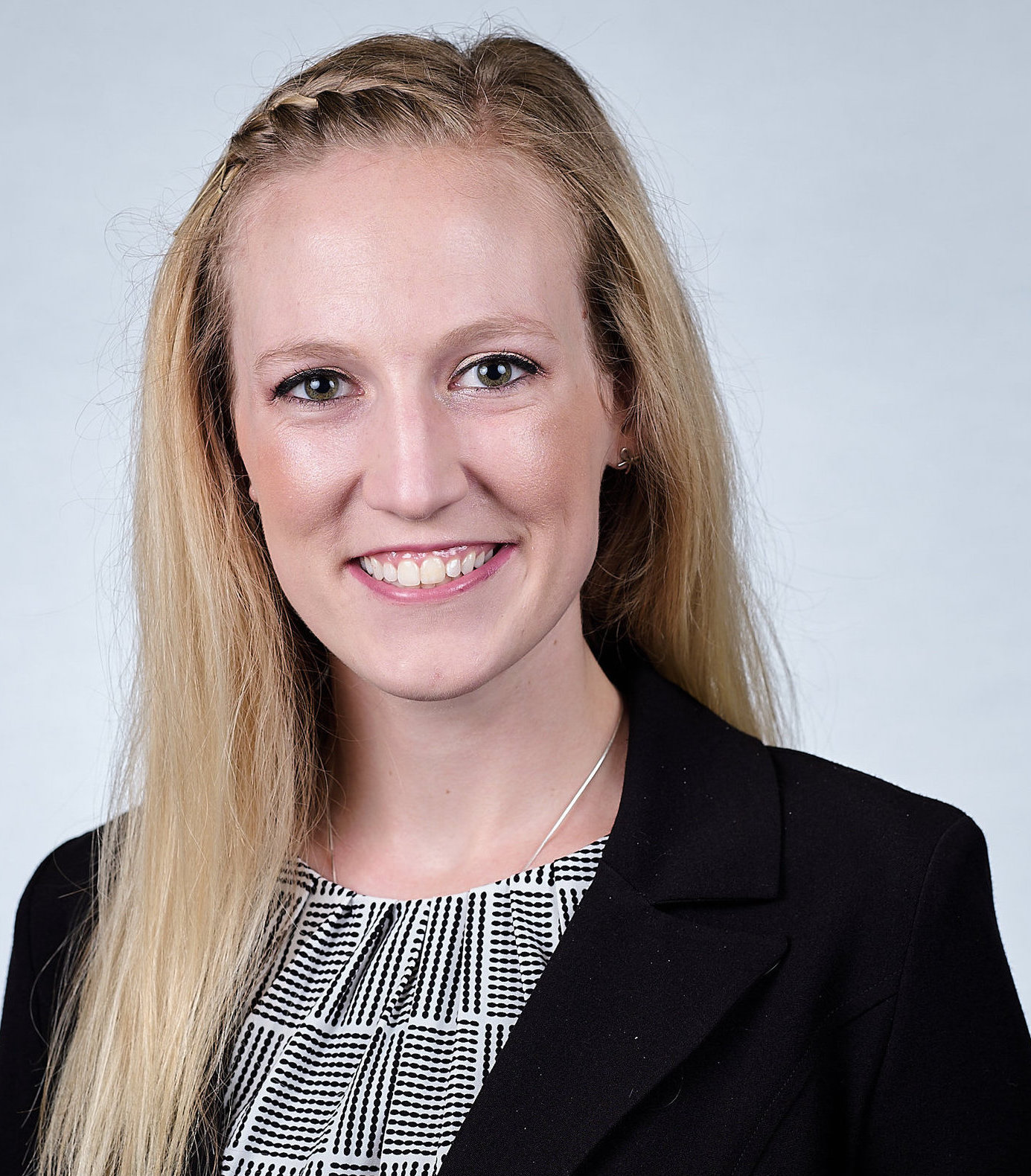Org. Synth. 2019, 96, 586-598
DOI: 10.15227/orgsyn.096.0586
Synthesis of 8-Hydroxygeraniol
Submitted by Francesca M. Ippoliti, Joyann S. Barber, and Neil K. Garg*
1
Checked by Joël Bernet, Vlad Pascanu, Jorge A. Gonzalez, and Cristina Nevado
1. Procedure (Note 1)
Caution! Reactions and subsequent operations involving peracids and peroxy compounds should be run behind a safety shield. Peroxy compounds should be added to the organic material, never the reverse. For relatively fast reactions, the rate of addition of the peroxy compound should be slow enough so that it reacts rapidly and no significant unreacted excess is allowed to build up. The reaction mixture should be stirred efficiently while the peroxy compound is being added, and cooling should generally be provided since many reactions of peroxy compounds are exothermic. New or unfamiliar reactions, particularly those run at elevated temperatures, should be run first on a small scale. Reaction products should never be recovered from the final reaction mixture by distillation until all residual active oxygen compounds (including unreacted peroxy compounds) have been destroyed. Decomposition of active oxygen compounds may be accomplished by the procedure described in Korach, M.; Nielsen, D. R.; Rideout, W. H. Org. Synth. 1962, 42, 50 (Org. Synth. 1973, Coll. Vol. 5, 414).
A. 8-Hydroxygeranyl acetate (2). A 1000 mL round-bottomed flask is equipped with 4.0 x 0.75 cm Teflon-coated magnetic stir bar. The apparatus is flame-dried under vacuum, and then cooled to 23 °C under an atmosphere of nitrogen. The flask is charged with selenium dioxide (2.71 g, 24.5 mmol, 0.4 equiv) (Note 2) and sealed with a rubber septum. A nitrogen inlet needle is placed in the rubber septum and maintained throughout the course of the reaction. Dichloromethane (300 mL) (Note 3) is added via cannula, followed by geranyl acetate (13.1 mL, 12.0 g, 61.1 mmol, 1 equiv) (Note 4) and tert-butyl hydroperoxide solution (34 mL, 5.5 M in decane, 190 mmol, 3.1 equiv) (Note 5) via plastic syringe (Notes 6 and 7).
After stirring for 1.5 h (300 rpm) at 23 °C (
Note 8), deionized water (100 mL), brine (100 mL), and
ethyl acetate (250 mL) are added to the flask (
Note 9). The resulting mixture is transferred to a separatory funnel (2 L) and the layers are separated (
Note 10). The organic layer is washed successively with a deionized water/brine mixture (150 mL, 1:1 v/v), saturated aqueous
NaHCO3 (150 mL), deionized water/brine mixture (150 mL, 1:1 v/v) and brine (150 mL) (
Note 11). The organic layer is dried over
MgSO4 (6.0 g) and filtered through a fritted Büchner funnel (
Note 12). The filtrate is concentrated on a rotary evaporator under reduced pressure (
Note 13). The residual colorless oil is purified via column chromatography using a 7 x 12.5 cm column of 250 g silica gel (
Note 14). The eluent that contains the product is concentrated by rotary evaporation under reduced pressure (
Note 15) to afford
8-hydroxygeranyl acetate (
2) as a colorless oil (4.84 g, 37%) (Figure 1) (Notes
16 and
17).
Figure 1. Purified 8-hydroxygeranyl acetate (2)
B.
8-Hydroxygeraniol (3). A 500 mL round-bottomed flask is equipped with 3.0 x 0.75 cm Teflon-coated magnetic stir bar. The apparatus is flame-dried and cooled to 23 °C under an atmosphere of nitrogen. The flask is charged with
8-hydroxygeranyl acetate (
2) (8.10 g, 38.2 mmol, 1 equiv) and sealed with a rubber septum. A nitrogen inlet needle is placed in the rubber septum and maintained throughout the course of the reaction. Then, methanol (240 mL) (
Note 18) is added via cannula. The septum is removed and
potassium carbonate (6.33 g, 45.8 mmol, 1.2 equiv) (
Note 19) is added in one portion. The rubber septum with a nitrogen inlet is restored (
Note 7) (Figure 2a).
Figure 2. a) Reaction set-up for Step B. b) Reaction becomes cloudy after stirring for 2.5 h
After stirring for 2.5 h (300 rpm) at 23 °C (
Note 20) (Figure 2b), the reaction mixture is concentrated on a rotary evaporator under reduced pressure (30 °C, 35 mmHg) to remove solvent (
Note 21).
Diethyl ether (150 mL) (
Note 22) and deionized water (100 mL) are added to the residue and the resulting mixture is transferred to a 500 mL separatory funnel. The layers are separated and the aqueous layer is extracted with
diethyl ether (3 x 150 mL). The combined organic layers are washed successively with 0.5 M
HCl (1 x 100 mL), saturated aqueous
NaHCO3 solution (1 x 100 mL), saturated
NaCl solution (1 x 100 mL), and deionized water (1 x 100 mL). The organic layer is dried over
MgSO4 (8.0 g) and filtered through a fritted Büchner funnel (
Note 12). The filtrate is concentrated on a rotary evaporator under reduced pressure. The resulting light yellow oil is purified via column chromatography using a 5.5 x 11 cm column of 100 g silica gel (
Note 23). The fractions that contain the product are concentrated by rotary evaporation under reduced pressure (
Note 15) to afford
8-hydroxygeraniol (
3) as a light yellow oil (5.33 g, 82% yield) (Figure 3) (Notes
24,
25, and
26).
Figure 3. Pure 8-hydroxygeraniol (3)
2. Notes
1. Prior to performing each reaction, a thorough hazard analysis and risk assessment should be carried out with regard to each chemical substance and experimental operation on the scale planned and in the context of the laboratory where the procedures will be carried out. Guidelines for carrying out risk assessments and for analyzing the hazards associated with chemicals can be found in references such as Chapter 4 of "Prudent Practices in the Laboratory" (The National Academies Press, Washington, D.C., 2011; the full text can be accessed free of charge at
https://www.nap.edu/catalog/12654/prudent-practices-in-the-laboratory-handling-and-management-of-chemical). See also "Identifying and Evaluating Hazards in Research Laboratories" (American Chemical Society, 2015) which is available via the associated website "Hazard Assessment in Research Laboratories" at
https://www.acs.org/content/acs/en/about/governance/committees/chemicalsafety/hazard-assessment.html. In the case of this procedure, the risk assessment should include (but not necessarily be limited to) an evaluation of the potential hazards associated with
selenium dioxide, dichloromethane,
tert-butyl hydroperoxide, decane,
geranyl acetate,
ethyl acetate,
sodium bicarbonate,
sodium chloride,
magnesium sulfate, hexanes, methanol,
potassium carbonate,
diethyl ether,
hydrochloric acid, silica gel,
p-anisaldehyde,
dimethyl fumarate, and deuterated
chloroform.
Caution! Reactions and subsequent operations involving peracids and peroxy compounds should be run behind a safety shield. Peroxy compounds should be added to the organic material, never the reverse. For relatively fast reactions, the rate of addition of the peroxy compound should be slow enough so that it reacts rapidly and no significant unreacted excess is allowed to build up. The reaction mixture should be stirred efficiently while the peroxy compound is being added, and cooling should generally be provided since many reactions of peroxy compounds are exothermic. New or unfamiliar reactions, particularly those run at elevated temperatures, should be run first on a small scale. Reaction products should never be recovered from the final reaction mixture by distillation until all residual active oxygen compounds (including unreacted peroxy compounds) have been destroyed. Decomposition of active oxygen compounds may be accomplished by the procedure described in Korach, M.; Nielsen, D. R.; Rideout, W. H. Org. Synth. 1962, 42, 50 (Org. Synth. 1973, Coll. Vol. 5, 414). 2.
Selenium dioxide (99.8%), purchased from Sigma Aldrich, was used as received.
3.
Methylene chloride (99.9%) was purchased from Fisher Scientific and passed through an activated alumina column before use.
4.
Geranyl acetate (98%) was purchased from Alfa Aesar and used as received. Purity was measured by QNMR and calculated to be 96%.
5.
tert-Butyl hydroperoxide solution (~5.5 M in decane, over 4Å molecular sieves) was purchased from Sigma Aldrich and used as received
6. The rate of addition was deemed inconsequential for this reaction.
7. The reaction was not observed to be sensitive to moisture or air, but was performed under N
2 as a precaution.
8. The progress of the reaction is monitored using TLC analysis on silica gel with 2:1 hexane:EtOAc as eluent and visualization with
p-anisaldehyde. The starting material has R
f=0.88 (teal blue), the aldehyde side product has R
f=0.68 (gray), and the alcohol desired product has R
f=0.43 (dark blue). The reaction is stopped before full consumption of the starting material to mitigate formation of the aldehyde side product.
Figure 4. Crude reaction TLC after Step A (S = starting material, R = reaction mixture, C = co-spot of S and R)
9.
Ethyl acetate (99.5%) was purchased from VWR and used as received.
10. The mixture requires time to separate due to the formation of an emulsion.
11.
NaCl (>99.5%) and
NaHCO3 (99+%) were purchased from Sigma-Aldrich and Acros Organics respectively, and used as received.
12. Filtration used a medium porosity fritted Büchner funnel under vacuum.
13. Approximately 40 mL of material remains at this stage, presumably because of non-volatile solvent being present.
14. SiliaFlash P60 (particle size 0.040-0.063 mm) was purchased from SiliCycle and used as received. The column was pre-wetted using 500 mL 6:1 hexanes:EtOAc. The column was eluted with 1500 mL of 6:1 hexanes:EtOAc. At this point, fraction collection (25 mL fractions) begins, and elution is continued with 1000 mL of 6:1 hexanes:EtOAc and then 2000 mL of 2:1 hexanes:EtOAc. The desired product is obtained in fractions 26-85.
15. Rotary evaporation from 30 °C, 150 mmHg to 30 °C, 15 mmHg followed by drying under high vacuum (<1 mmHg) for 1 h afforded the pure product.
16.
1H NMR
pdf (400 MHz, CDCl
3) δ: 1.56 (br s, 1H), 1.66 (s, 3H), 1.70 (s, 3H), 2.05 (s, 3H), 2.06-2.10 (m, 2H), 2.17 (dt,
J= 7.4, 7.4, 2H), 3.99 (s, 2H), 4.58 (d,
J = 7.1, 2H), 5.31-5.38 (m, 2H);
13C NMR
pdf (101 MHz, CDCl
3) δ: 13.8, 16.5, 21.2, 25.8, 39.2, 61.6, 69.0, 118.8, 125.5, 135.4, 141.8, 171.3; IR (film): 3418, 2919, 2858, 1736, 1670, 1230 cm
-1; HRMS-ESI (
m/z) [M+Na]
+ calcd for C
12H
20O
3Na
+, 235.1305; found, 235.1304. The submitter's yield was 62%. Checkers obtained 40% yield when the procedure was carried out in half scale.
17. The purity of
2 was determined to be >97% by QNMR
pdf using
dimethyl fumarate as the internal standard.
18. Methanol (99.8%) was purchased from Fisher Scientific and passed through an activated alumina column before use.
19.
Potassium carbonate, anhydrous (99%) was purchased from Alfa Aesar and used as received.
20. The progress of the reaction is monitored using TLC analysis (Figure 5) on silica gel with 1:1 hexane:EtOAc as eluent and visualization with
p-anisaldehyde. The starting material has R
f=0.55 (dark blue) and the product has R
f=0.18 (dark blue).
Figure 5. TLC of crude reaction mixture after Step B (S = starting material, R = reaction mixture, C = co-spot of S and R)
21. Due to the excess solids in the reaction flask, it is prone to vigorous bubbling. Thus, rotary evaporation must be done cautiously, beginning at 120 mmHg, 30 °C and ending at 35 mmHg, 30 °C.
22. Ethyl ether anhydrous (99%) was purchased from Fisher Scientific and used as received.
23. SiliaFlash P60 (particle size 0.040-0.063 mm) was purchased from SiliCycle and used as received. The column is pre-wetted using 200 mL 1:1 hexanes:EtOAc. The column is eluted sequentially with 800 mL of 1:1 hexanes:EtOAc and 1000 mL of
ethyl acetate. All fractions are collected (25 mL fractions), and the desired product is obtained in fractions 20-50.
24.
1H NMR
pdf (400 MHz, CDCl
3) δ: 1.65 (s, 3H), 1.67 (s, 3H), 2.02 (br s, 2H), 2.06-2.09 (m, 2H), 2.17 (dt,
J= 7.6, 7.1 Hz 2H), 3.98 (s, 2H), 4.14 (d,
J = 7.0 Hz, 2H), 5.35-5.42 (m, 2H);
13C NMR
pdf (101 MHz, CDCl
3) δ: 13.9, 16.3, 25.8, 39.2, 59.5, 69.0, 123.9, 125.6, 135.3, 139.2; IR (film): 3305, 2916, 2858, 1669, 999 cm
-1; HRMS-ESI (
m/z) [M+Na]
+ calcd for C
10H
18O
2Na
+, 193.1200; found, 193.1202. The procedure was carried out in half-scale providing the product in 85% yield.
25. The purity of
3 was determined to be >97% by QNMR
pdf using
dimethyl fumarate as the internal standard.
26. This material was stable when stored at -20 °C for 5 months.
Working with Hazardous Chemicals
The procedures in
Organic Syntheses are intended for use only by persons with proper training in experimental organic chemistry. All hazardous materials should be handled using the standard procedures for work with chemicals described in references such as "Prudent Practices in the Laboratory" (The National Academies Press, Washington, D.C., 2011; the full text can be accessed free of charge at
http://www.nap.edu/catalog.php?record_id=12654). All chemical waste should be disposed of in accordance with local regulations. For general guidelines for the management of chemical waste, see Chapter 8 of Prudent Practices.
In some articles in Organic Syntheses, chemical-specific hazards are highlighted in red "Caution Notes" within a procedure. It is important to recognize that the absence of a caution note does not imply that no significant hazards are associated with the chemicals involved in that procedure. Prior to performing a reaction, a thorough risk assessment should be carried out that includes a review of the potential hazards associated with each chemical and experimental operation on the scale that is planned for the procedure. Guidelines for carrying out a risk assessment and for analyzing the hazards associated with chemicals can be found in Chapter 4 of Prudent Practices.
The procedures described in Organic Syntheses are provided as published and are conducted at one's own risk. Organic Syntheses, Inc., its Editors, and its Board of Directors do not warrant or guarantee the safety of individuals using these procedures and hereby disclaim any liability for any injuries or damages claimed to have resulted from or related in any way to the procedures herein.
3. Discussion
8-Hydroxygeraniol (
3, Figure 6) is a key biosynthetic precursor to all monoterpene indole alkaloids (MIAs). Countless chemical and biological pursuits have been prompted by MIAs over the past century. More than 3,000 MIAs have been uncovered to date, representing a vast range of biological effects.
2,3,4,5,6
From a biosynthetic standpoint,
3 is converted to strictosidine (
4), which is the last common biosynthetic precursor to all other MIAs (Figure 6).
7 The notorious poison strychnine (
5) is just one example of an MIA that arises biosynthetically from
4. Other examples including medicinally important compounds such as the anti-cancer agent vinblastine (
6), the anti-malarial medicine quinine (
7), and ajmalicine (
8), used to treat high blood pressure.
2,8
Figure 6. 8-Hydroxygeraniol and its importance in the biosynthesis of monoterpene indole alkaloids (MIAs)
As the structure of
8-hydroxygeraniol (
3) is notably less complex compared to the MIAs, scientists have sought to use
3 in biosynthetic investigations for the production of MIAs.
9,10,11 To access
3, several synthetic strategies have been pursued, a few of which are summarized in Figure 7. Two reports were disclosed in 1970, which involved the use of either levulinaldehyde (
9)
12 or dehydrolinalool (
10)
13 to prepare
3 through multistep synthetic sequences. Williams and Lin reported a novel approach in 1981, which relied on an initial photocycloaddition of
11 and
12, with further elaboration.
14
Figure 7. Previous methods to synthesize 8-hydroxygeraniol
Perhaps the most direct approach relies on the use of
geranyl acetate (
1) as the starting material. Following seminal studies by Kobayashi
15 and Sharpless,
16 our laboratory developed the modified protocol described herein
17 (Figure 8). The oxidation of
1 using SeO
2 occurs smoothly in just 1.5 h at 23 °C to furnish
2 in good yield. The oxidized product
2 is then treated with K
2CO
3 in methanol, thus providing
8-hydroxygeraniol (
3) in 82% yield. The protocol is operationally simple, scalable, and should enable biosynthetic investigations pertaining to monoterpene indole alkaloids.
Figure 8. Optimal synthesis of 8-hydroxygeraniol
Appendix
Chemical Abstracts Nomenclature (Registry Number)
Geranyl acetate; (1) (105-87-3)
Selenium dioxide; (7446-08-4)
tert-Butyl hydroperoxide solution; (75-91-2)
Potassium carbonate; (584-08-7)

|
Francesca Ippoliti was born in St. Paul, Minnesota. In 2017, she received her B. S. in Chemistry from the University of St. Thomas where she carried out research under the direction of Professor Lisa E. Prevette. She then moved to the University of California, Los Angeles where she is currently a third-year graduate student in Professor Neil K. Garg's laboratory. Her graduate studies primarily focus on the total synthesis of natural products.
|

|
Joyann Barber was born and raised in Southern California. She received her B. S. in Chemistry from Cal Poly Pomona in 2014. In 2014, she began her doctoral studies at the University of California, Los Angeles in Professor Neil K. Garg's laboratory where her research primarily focused on harnessing the reactivity of strained intermediates for the construction of heterocycles. In 2019, she graduated and moved to San Diego, CA where she currently works as a medicinal chemist at Pfizer.
|

|
Neil Garg is a Professor of Chemistry and the Kenneth N. Trueblood Endowed Chair at the University of California, Los Angeles. His laboratory develops novel synthetic strategies and methodologies to enable the total synthesis of complex bioactive molecules. |

|
Joël Bernet was born and raised in Repperswil-Jona, Switzerland. He joined the Nevado group at the beginning of 2019 as a lab technician. Currently, he is in the second year of an apprenticeship program in Chemistry. |

|
Vlad Pascanu was born in Cluj-Napoca, Romania. There he studied chemical engineering at an undergraduate level until 2011. In 2012 he started his doctoral studies in organic chemistry at Stockholm University, in Sweden. Upon defending his thesis, he joined the group of Prof. Cristina Nevado at the University of Zurich, Switzerland, as a postdoctoral research associate in 2017.
|

|
Jorge Gonzalez was born in Xalapa, Mexico. He completed his Undergraduate Degree in Chemistry at the National and Autonomous University of Mexico in 2011. He obtained his Ph.D. at the University of Edinburgh in 2016. He is currently a postdoctoral associate research associate in the group of Prof. Cristina Nevado.
|
Copyright © 1921-, Organic Syntheses, Inc. All Rights Reserved